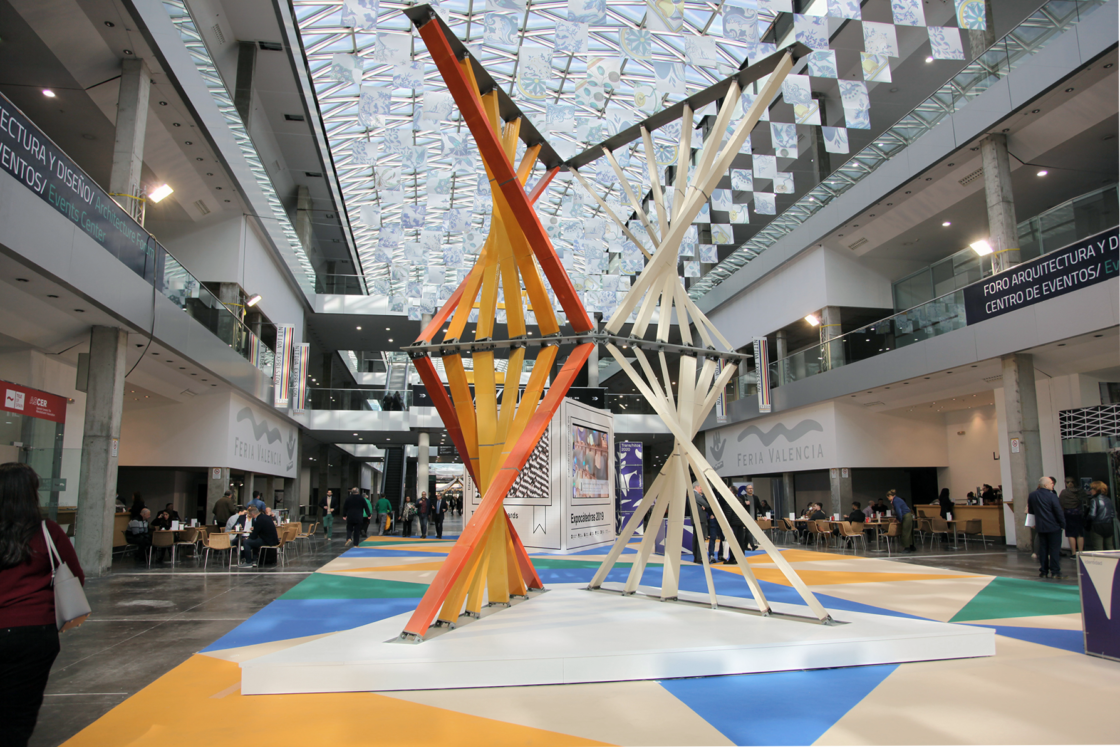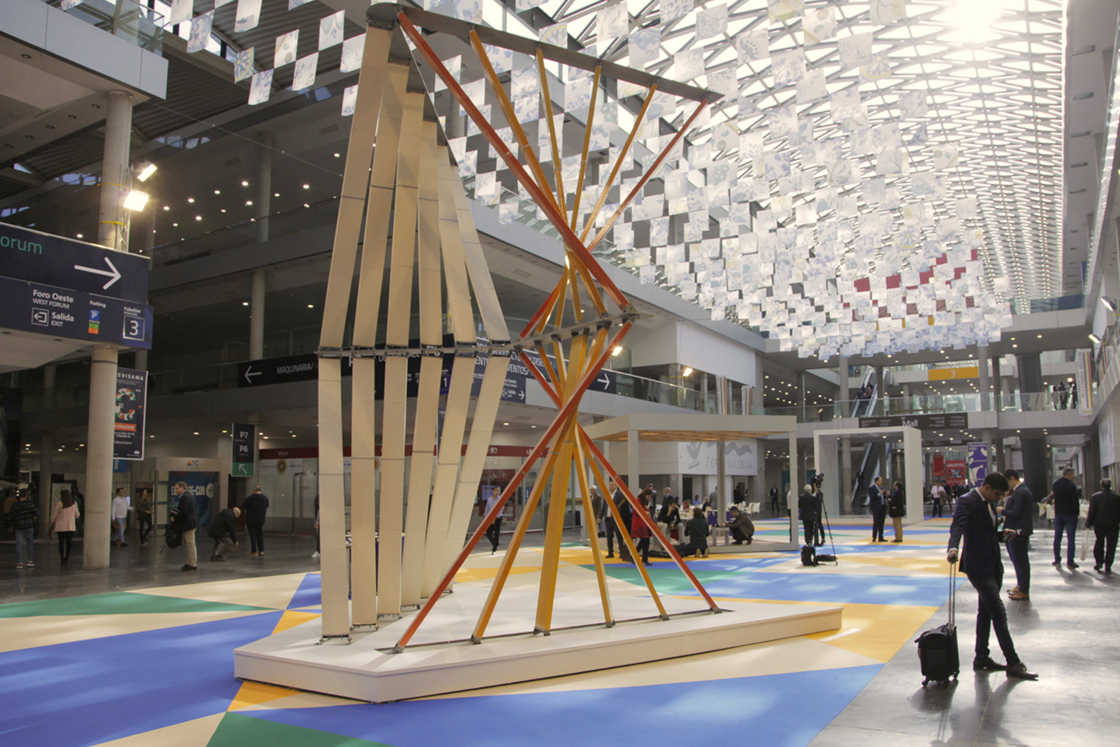Ceramic Prototype: Hypar Tower
Developed by researchers from the Material Processes and Systems (MaP+S) Group at the Harvard Graduate School of Design, Ceramic Prototype: Hypar Tower explores the structural capabilities of slender ceramic extrusions – a product commonly utilized for exterior claddings, rain screens or sun-shading elements.
Structural applications are emerging as new applications for ceramic elements, challenging age-old perceptions of ceramic as non-structural surface finish. Post-tensioning these elements further increases their structural capabilities, creating new design opportunities, including the possibility to produce self-supporting structures such as arches, cantilevers, or long spans.
The design is comprised of 24 unique ceramic struts, which are arranged to define two pairs of stacked hyperbolic paraboloids, or hypars, reaching 6 m in height. The 24 struts are fabricated from 104 hollow ceramic extrusions measuring up to 0.9m in length with a cross-section measuring 250 mm x 60 mm. These extrusions are standard industrially produced elements. Each strut is post-tensioned to control bending stresses and improve moment resistance. The struts are held in position with three laser cut metal plates.
The project team developed a computational approach to generate the geometry of the structure, discretize the form into individual components, and accommodate for assembly tolerances. This digital workflow enabled the project team to quickly adjust assembly tolerances and component dimensions during the design and prototyping phase.
Photographs courtesy of Jordi Font de Mora.
Director and Structural Design: Professor Martin Bechthold
Project Manager: Zach Seibold
Project Team: Saurabh Mhatre, Natalia Bechthold
Client: Cevisama
Sponsor: ASCER Tile of Spain
Coordinator: ITC: Javier Mira
Structural Peer Review: Windmill Engineering
Installation: Grupo on Market
Material Testing: Simpson Gumpertz & Heger Inc.


